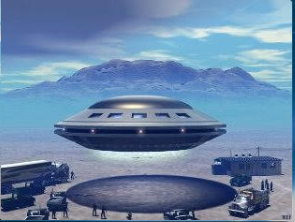
Space travel has long been a child’s dream. There are many aspects of space flight that are as fascinating as the imagination can wander.
But, there’s a serious problem. With the speeds achieved by the brightest of today’s rocket science, space travel takes too long to get anywhere. The fuel of modern rockets to reach warp speed is unobtainium. The entire rocket science industry with conventional engineering designs were designed as debris. Built on a foundation of inefficiency and waste.
The most intelligent scientific minds carry out the same experiments of a child that places a tin can on top of a firecracker. Hundreds of millions of dollars are spent to place astronauts in a capsule on top of a bomb. Explosions serve to launch rockets fast enough to reach escape velocity. When the capsule portions reach the outer atmosphere and out of the major grip of Earth’s gravitational influence, the astronauts’ capsule maintains their launch speed near 25,000 mph.
The purpose for using fuel to propel a vehicle is to capture the reaction of energy surge released in chemical explosions. What’s the problem that is ignored by an engineering industry focused on principles of aeronautical design? There is an issue found in physics that shows the release of energy in a chemical explosion travels in 360 degrees. And a rocket only travels in one direction. This means that a rocket is able to capture, how many degrees of energy release?
Any space flight for significant travel in space must have significant speed. This eliminates the use of fuels for chemical reactions whose design produces insanely inefficient waste.
What’s the solution? The solution begins by removing the field of space flight from the influence of aeronautical.engineering principles.
In November 2021, the NASA solar probe, Parker, had become the fastest object built by humans. It passed the Sun at a speed of 364,621mph. This was accomplished by its “gravity assist” speed boost in making a close passage to Venus.
Using the best rocket science engineering available, mankind has achieved 25,000mph. Light speed (C) is 186,828 miles per second. 25,000mph is one-twenty-five-thousandth of C (actually, 0.000037279123279345). For human engineering to reach only 1% of C, it requires a mechanism to attain the speed 186.282 miles/second, or 670,617 miles/hour. Parker, NASA’s solar probe, reached half the speed of 1% of C. How? By utilizing the attractive nature of gravity.
The common-sense conclusion is that the attractive nature of gravity is much more advantageous than the current engineering pursuit of propulsion in space travel.
Where can mankind go in space at 25,000 mph, how many miles is that in a day? 600,000 miles. Only 9.5 hours to the moon in a straight line. Mars is 61,470,000 miles, 5 minutes at light speed, 2,459 hours or 98 days in a straight line at 25,000 mph but, orbital considerations cause the trip to Mars to be around 8 months.
Theoretically, the closest distance in the orbits of Earth and Mars is 33.9 million miles, according to Space.com . At the furthest distance, the two planets are around 250 million miles apart.
How can the engineering intellect of mankind reach significant speed for space travel?
- Step 1: stop using explosions to blast a can into space
- Step 2: stop seeking propulsion
- Step 3: study gravity
- Step 4: find people who have built devices and crafts that have the capacity to fly without being based on aeronautic principles
CATTCC is a think tank for these topics. CATTCC members are involved in the conversations and support this work.
-member link-
Reaching significant speeds in space flight is a process that will eventually take place. Beginning the process starts with looking. The principles NASA affiliates used in reaching its highest speeds is certainly proof that gravity provides faster speed than propulsion via chemical explosions as a fuel.
The common perception for using gravity with transportation is the term “anti-gravity”. The proper term is ‘the manipulation of gravity’. By utilizing gravitation motion, rather than eliminating the concept of its existence, gravity can be used as a source for motion.
A new mode of transportation is essential. It will also be the outcome for research of gravity as a source of motion for transportation. The future of transportation floats. It’s the outcome to the application in the evolution of technology.
What is CATTCC doing? Its study posed the question: what is gravity? How does it work? The answers were posted.
What do we look for in considering gravity as the source of motion for transportation? Specifically, it is the attractive force that gravity has which is our focus. All current forms of transportation use propulsion as the source of motion. By considering the attractive force of gravity as the source to attract an object; it becomes clear that this is a source for transportation motion.
What is the attractive force of gravity? Its force was measured in an equation by Issac Newton 400 years ago. It’s measured by knowing the result of a motion. If you are standing on Earth’s surface holding a set of keys in your hand and release the set of keys, it doesn’t require a college degree in physics to know what will happen: the set of keys will be immediately attracted to the ground. What is the source of attraction? Newton defined it as mass, the mass in the set of keys is attracted by a larger body of mass.
The definition of gravity was not explained by Newton 400 years ago. He defined its principles of application.
There is a new theory for gravity. It provides the rationale to show a movement flow in calculating gravitational waves for using gravity as a source for motion. And, with gravity as the most abundant force in the universe, space flight becomes a viable consideration. .
How is space flight made possible? By the application of certain principles as shown by Nikola Tesla in the ship Otis Carr built in the late 1950s.
How can gravity serve as the source of motion for transportation? According to the Biefeld-Brown Effect, align a positive charge of a capacitor on the leading edge of a transportation apparatus and a negative charge on the trailing edge. Okay, that’s a magnet. This is beyond the capability of magnetism; magnets aren’t attracted to all objects but electrogravitics applies to all matter. As a source of motion for transportation, how does this provide floatation or levitation? And how does this provide acceleration? The one thing I know: it has to involve spin.

